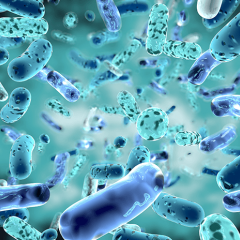An international study that has identified new genetic regions involved in rheumatoid arthritis has shed light on existing medicines that could be effective in treating the disease.
Researchers from The University of Queensland (UQ) and the Second Military Medical University, Shanghai, worked with other groups from around the world to identify 42 new genetic regions involved in the disease, bringing the total known to be involved to 101.
University of Queensland Diamantina Institute Director Professor Matt Brown said rheumatoid arthritis was a painful, debilitating condition caused by immune system dysfunction.
“It affects about one in 100 Australians and is more common in women than men,” he said.
It is believed that 65 per cent of the risk is genetic.
The research was the largest such genetic study in the world and the first in Han Chinese.
Professor Brown said the ground-breaking study revealed previously hidden genetic links between different types of rheumatoid arthritis.
“This research, involving several thousand Chinese rheumatoid arthritis patients, identified a set of previously unknown genetic contributors to rheumatoid arthritis in that population and revealed substantial genetic overlap with European patients,” Professor Brown said.
“This demonstrates that rheumatoid arthritis in Europeans and Chinese is very similar genetically.
“We could extrapolate that treatments developed in one population will very likely work in the other, and the causes of the disease must be similar in both.”
The study, to be published in Nature and in Arthritis and Rheumatism, has nearly doubled the number of regions of the genome associated with the disease.
Professor Brown, Professor Peter Visscher from the Queensland Brain Institute and the UQ Diamantina Institute and Dr Jian Yang (QBI) collaborated with a large team in Shanghai led by Professor Huji Xu.
The project was funded by the Second Military Medical University and Professor Brown’s Queensland Premier Science Fellowship awarded this year.
The researchers identified several genes that are already targets of approved treatments for other diseases, including cancer treatments. These drugs could now potentially be repurposed for rheumatoid arthritis treatment.
The disease is prevalent in European and Asian populations, but previous research suggested genetic differences between European and Asian rheumatoid arthritis.
The study found that two-thirds of the risk loci play roles in other human conditions, including immune-related diseases, cardiovascular diseases and cancer.
The researchers identified 98 genes as the most likely culprits in rheumatoid arthritis development.
They showed that existing rheumatoid arthritis drugs only target 30 of those genes, meaning a large number of potential new drug targets can now be investigated.
“This exciting discovery highlights the power of modern genetics to make a difference in serious diseases like rheumatoid arthritis,” Professor Brown said.
“Most therapies target known rheumatoid arthritis genes but this these genetic findings are likely to be very informative for new therapy development.”
The research was supported by the Harvard Medical School and the Broad Institute of the National Institutes of Health (NIH).
Media: Caroline Davy, UQ Diamantina Institute, Marketing and Communications Manager, c.davy@uq.edu.au or 3443 7027.



